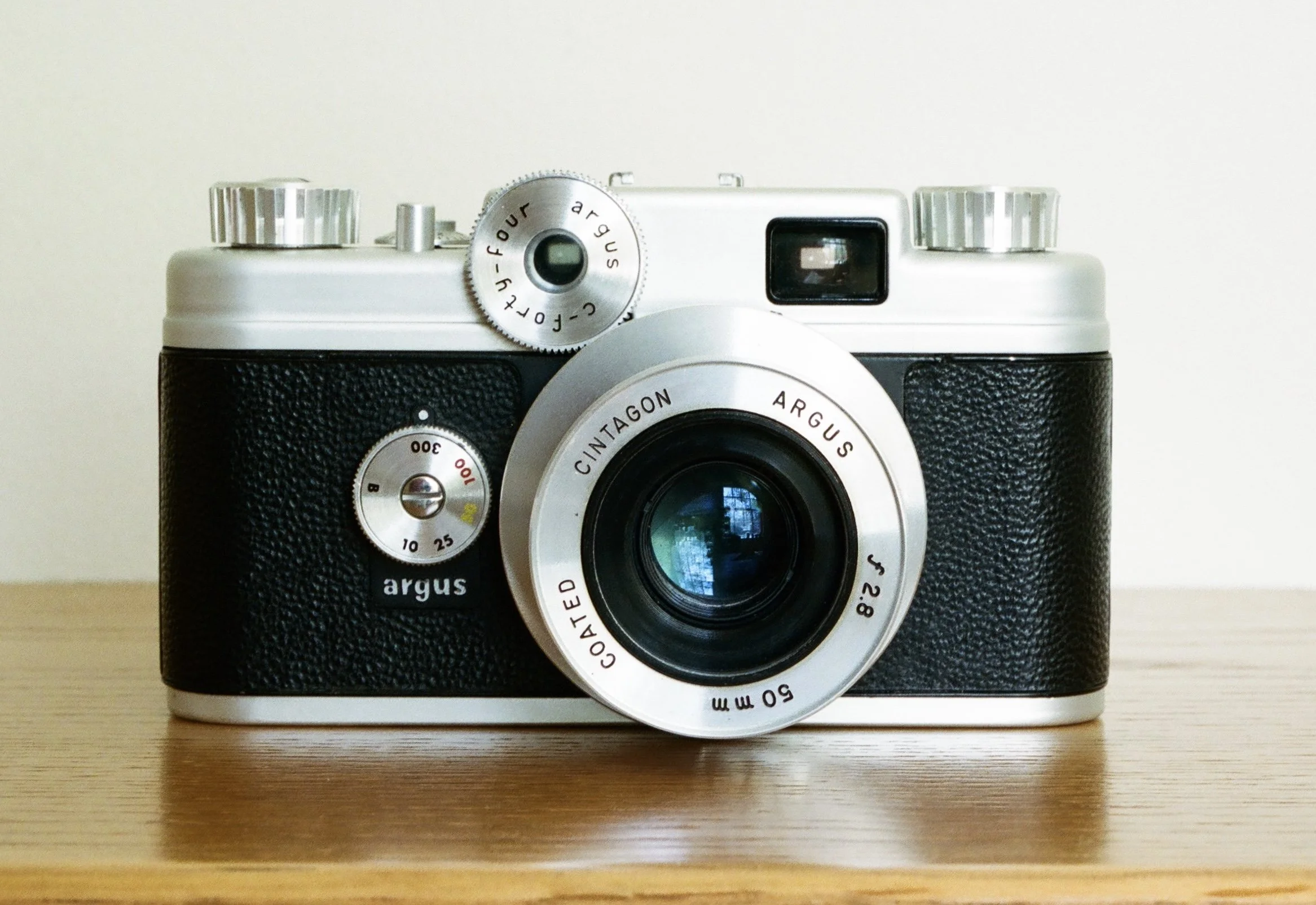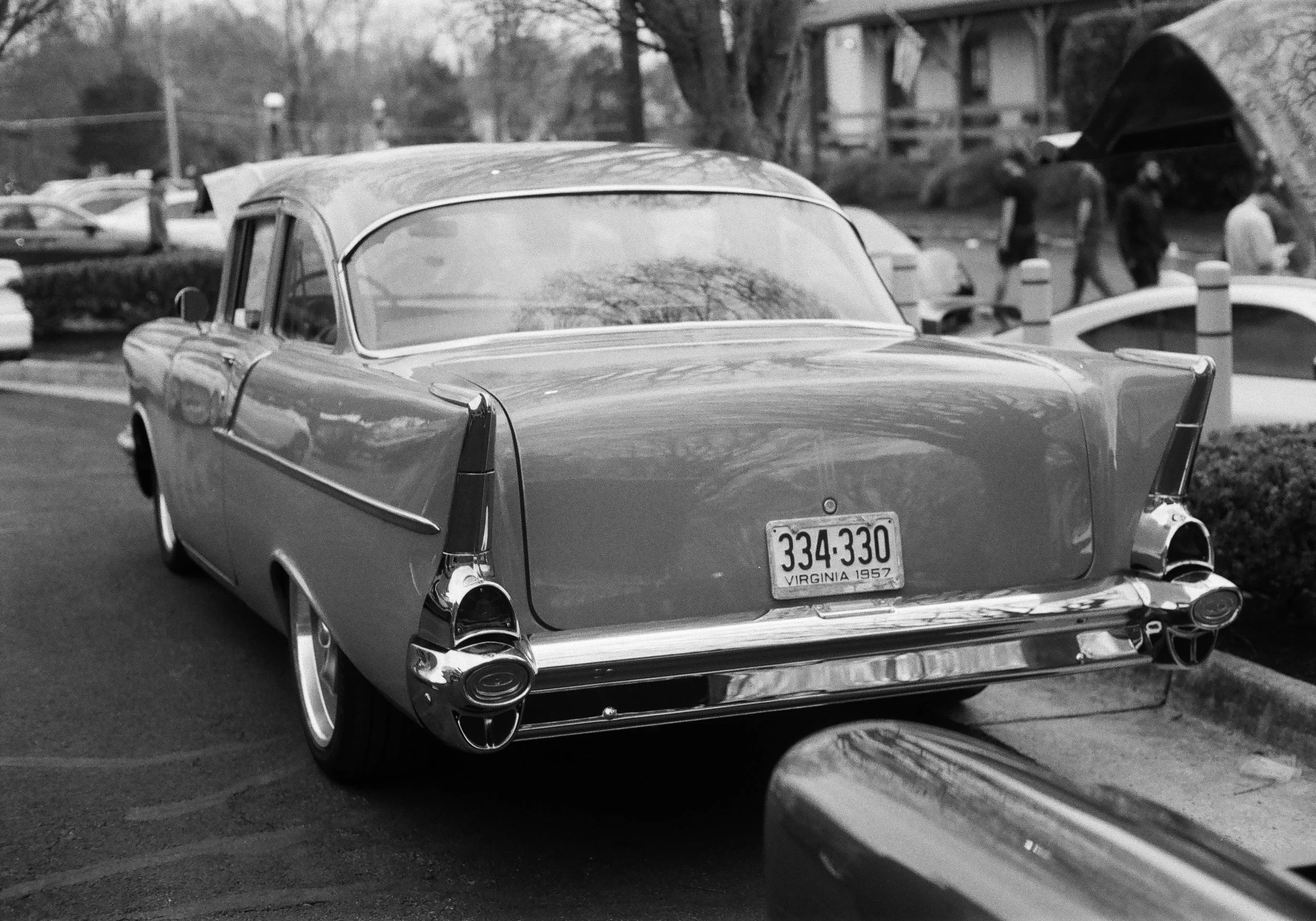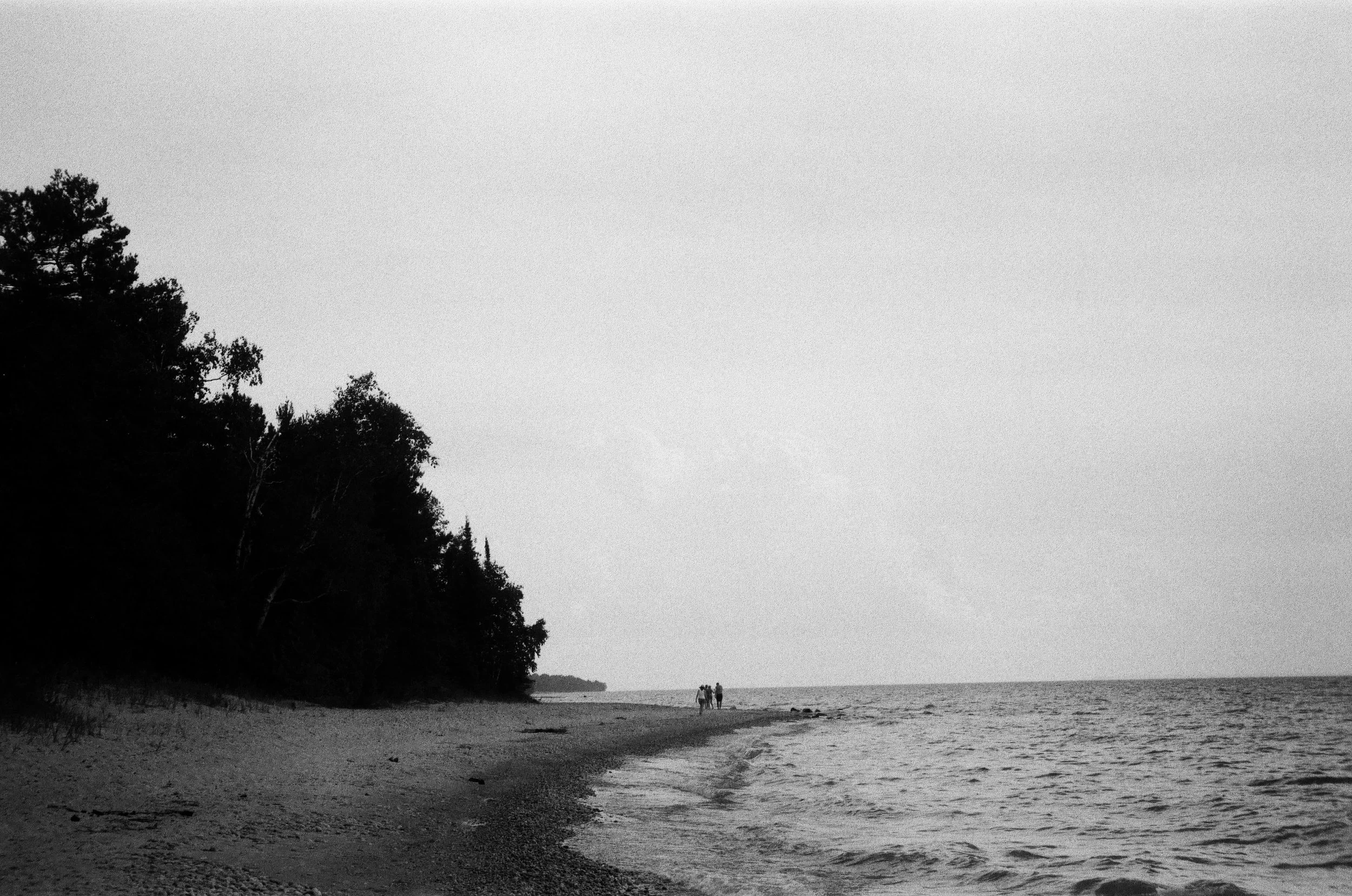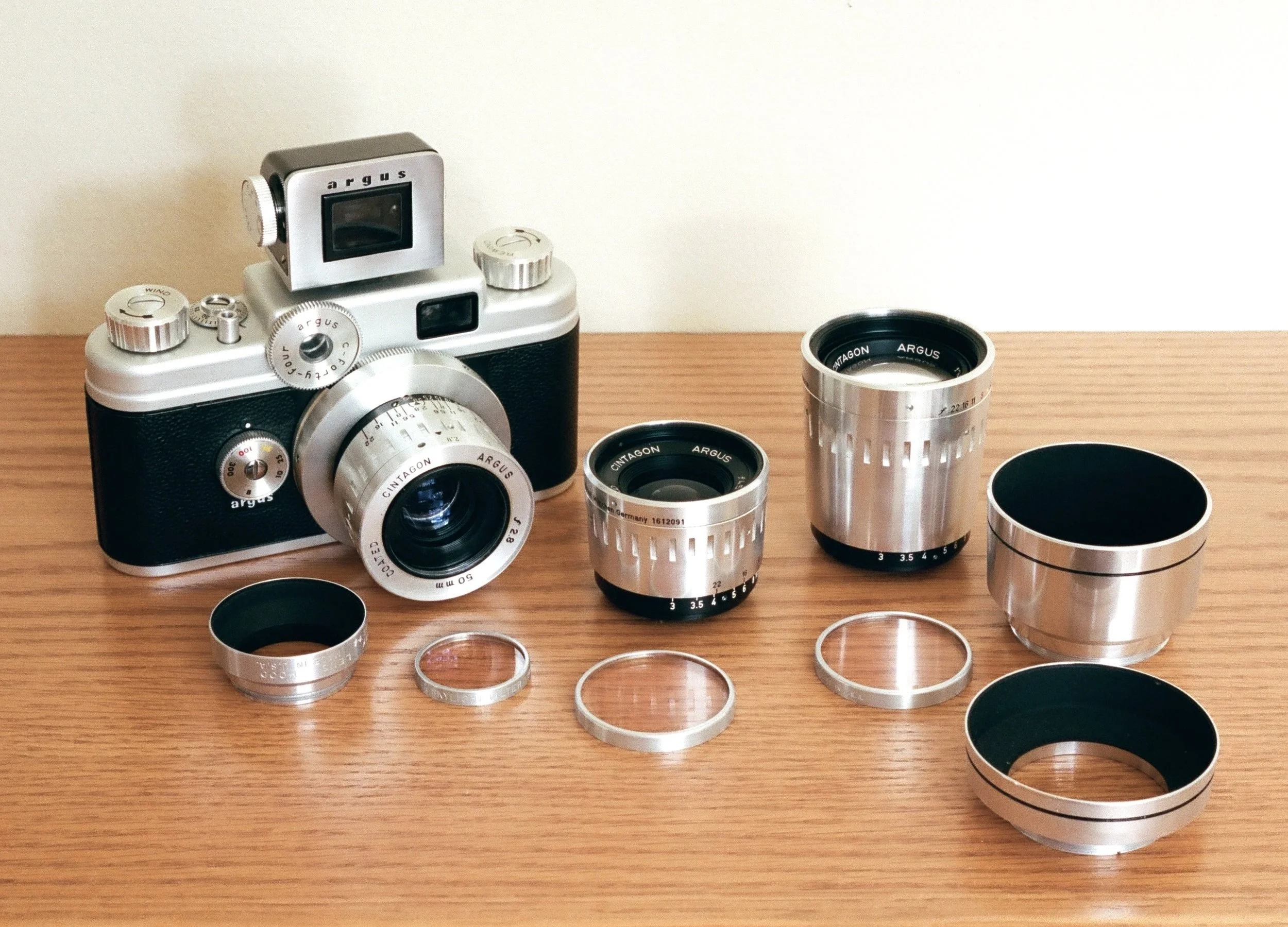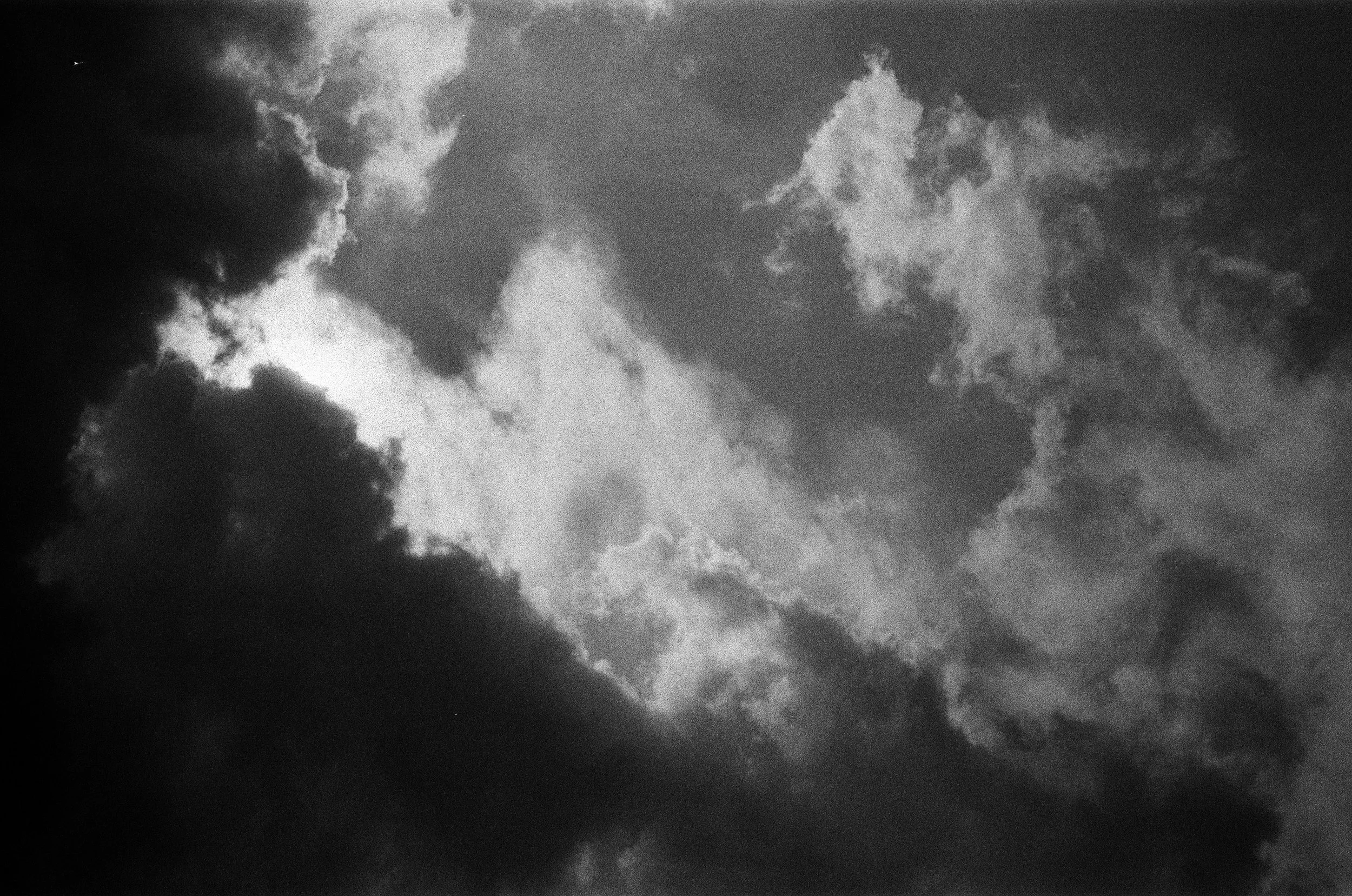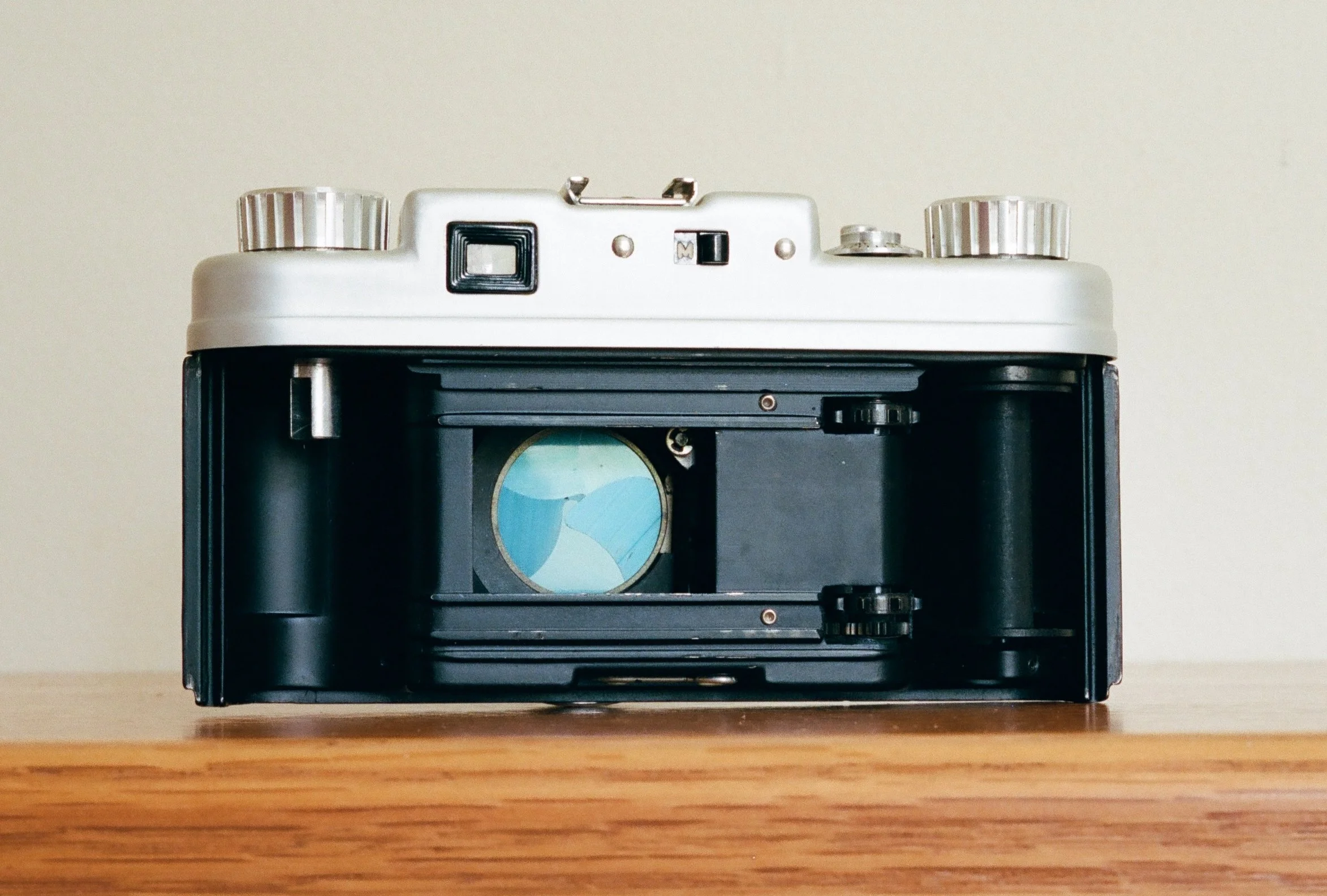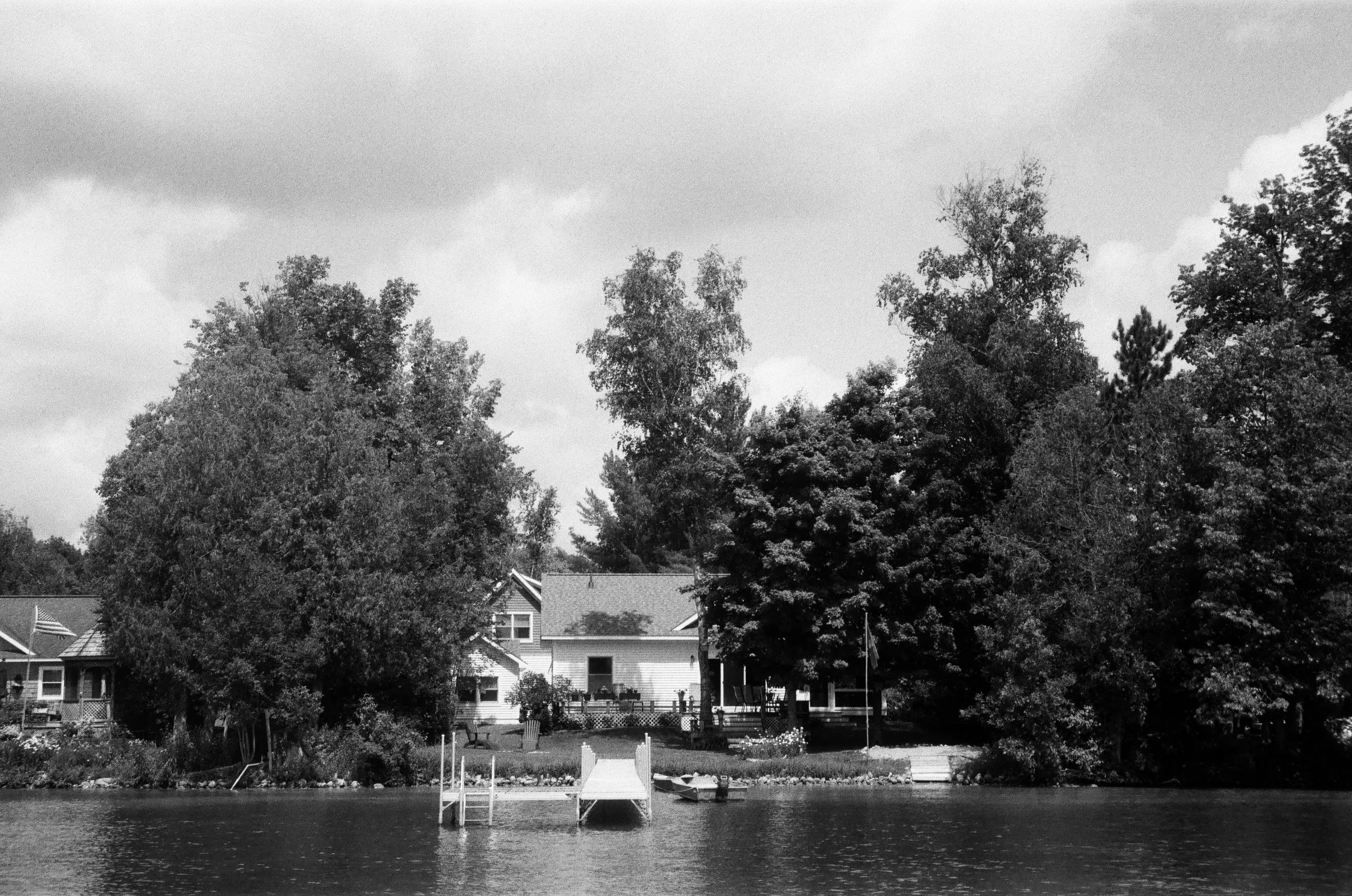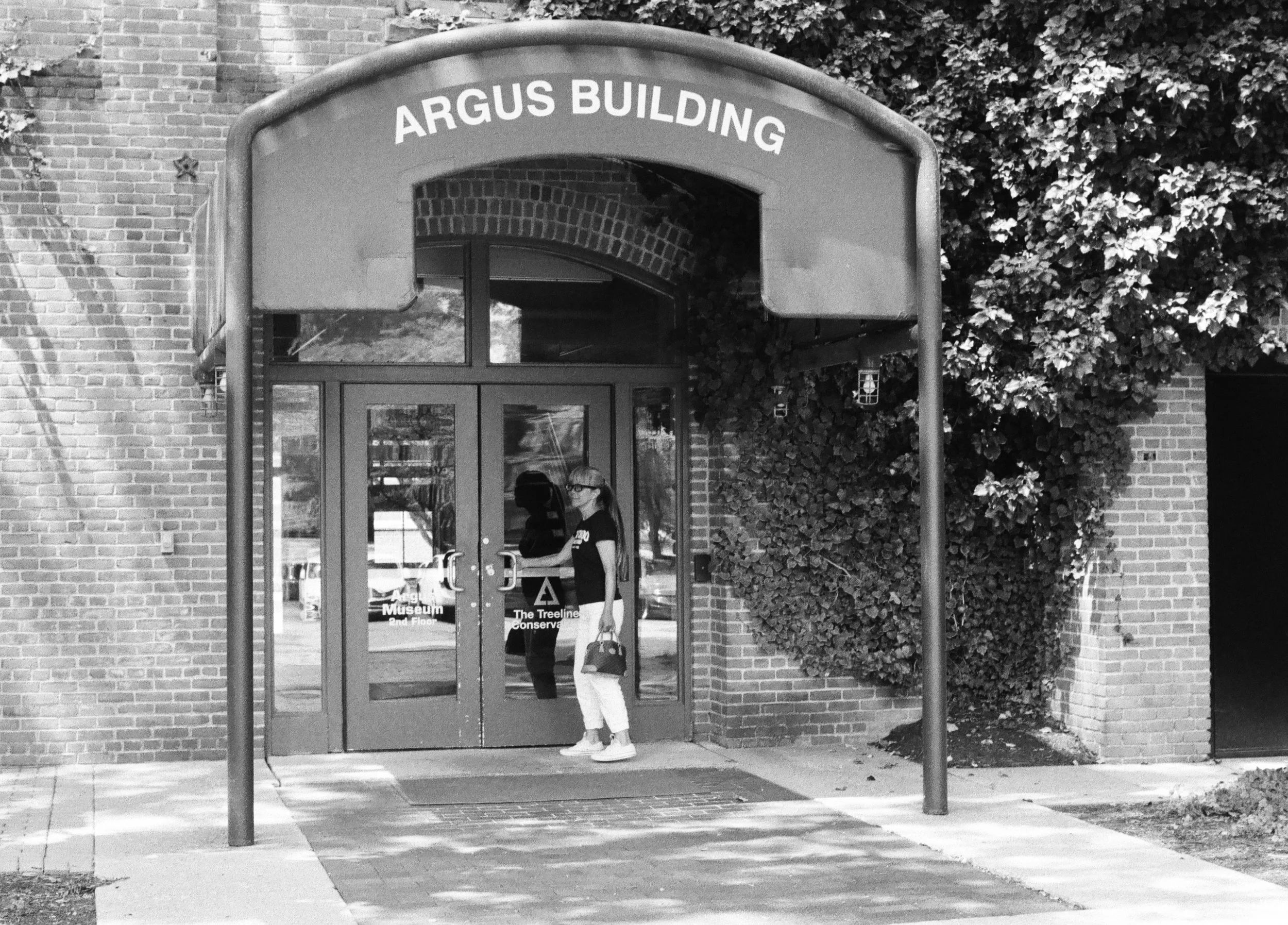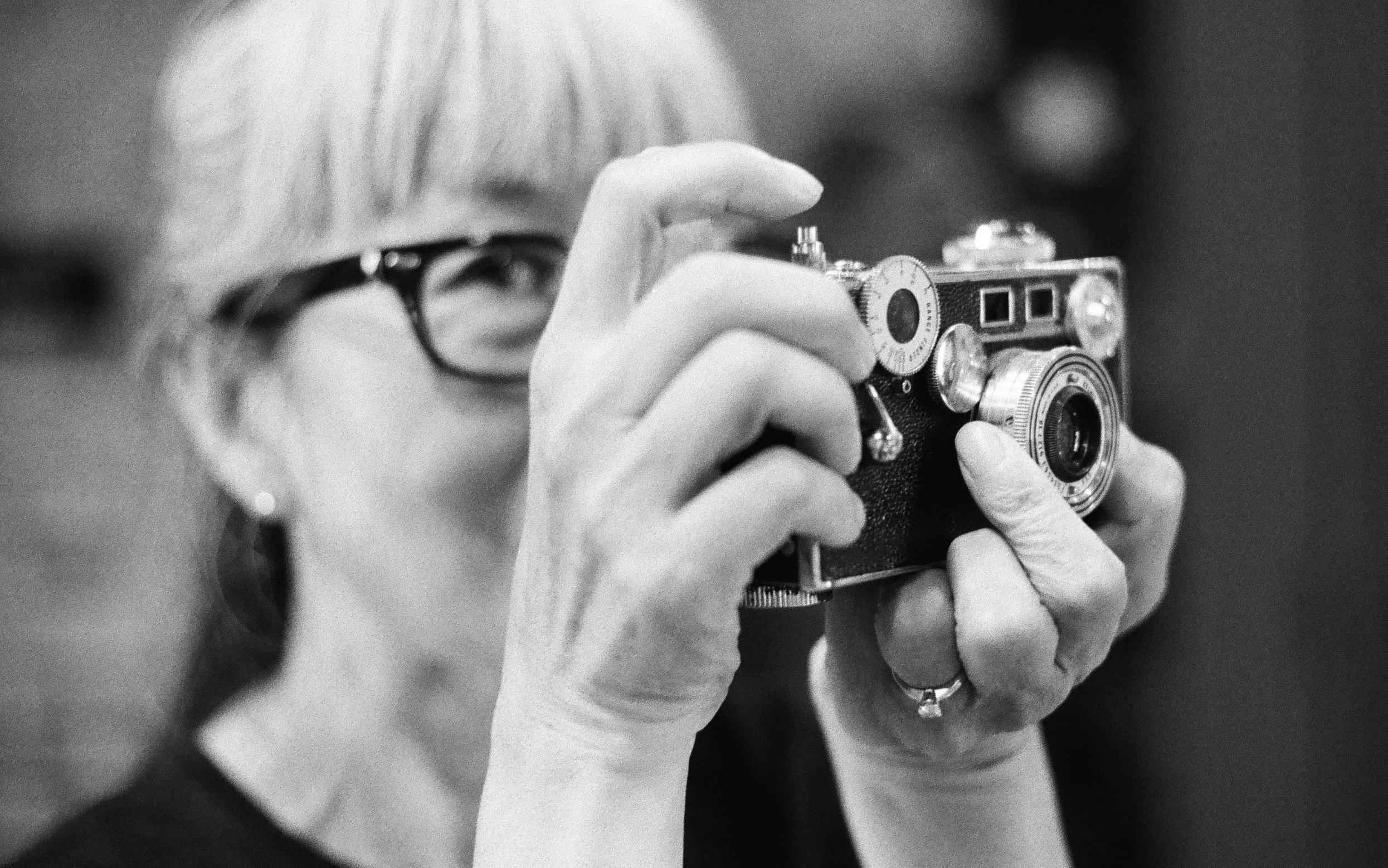Argus C44
In the late 1950s Detroit was known for cars with tail fins, and this camera.
Argus C44 with 50mm f/2.8 Cintagon lens. (Color photos of the camera were made with a Nikon F, 55mm f/3.5 Micro-Nikkor-P.C, and Portra 400.)
Detroit, 1957
Synonomous with the American automobile industry for well over 100 years, Detroit was once the home of a major camera maker too. My Argus and this car (below) are 1957 products of Detroit-area companies:
‘57 Chevy at Katie’s Coffee House, Great Falls, Va. Nikomat FTN, 50mm f/2 Nikkor-H, FP4+, 2025.
A refined Argus camera
Argus cameras were made by a Depression-era startup company in Ann Arbor, Michigan, a college town near Detroit. Argus achieved success by making durable, utilitarian cameras for the popular market. They’re best known for the simple ‘Argus brick’ model of which vast numbers were sold in the mid-20th century.
The Argus C44 is a more refined product of the company’s unsuccessful 1950s attempt to compete with the Germans and the Japanese in the mid-level camera market.
Charlevoix, Michigan. Near Fishmans Island State Park. (Argus C44, 50mm f/2.8 Cintagon, FP4+, 2023.)
American cameras: not much presence in the mid-tier market
In the early- to mid-20th century, American camera manufacturers concentrated on the professional market and the popular market. A bimodal market strategy.
Pro-level: The Graflex, the Speed Graphic, view cameras by Deardorff, Eastman Kodak, Korona, Seneca, Calumet, and others are famous examples of American top-level professional cameras.
Popular level: At the other end of the range, popular photography had been invented by Kodak in the late 19th century (Pritchard, 2015) and for the next several decades that market was served in the U.S. by Kodak and competitors such as Argus.
There were few U.S.-made offerings in the mid-range ‘advanced amateur’ segment. Those cameras were for the most part German, and then Japanese. Kodak’s product line included an excellent mid-range camera, the Retina, but it was designed and made in Germany.
Argus C44 outfit. Camera with three lenses (35mm f/4.5, 50mm f/2.8, and 100mm f/3.5), lens hoods, clear filters, and an accessory viewfinder with parallax correction for use with the 35mm and 100mm lenses.
The mid-range Argus C44
In the 1950s Argus, successful with popular cameras, tried to move up-market with a new American-made product line, the C4. Versions were in production from 1951 to 1962 and the C44, made from 1956 to 1957, was one (Argus Museum; McKeown, 1996).
The C44 came with three lenses and other accessories as shown above. The lenses are branded as Argus Coated Cintagon. The 50mm lens is U.S-made and the others are marked ‘Steinheil München Germany’.
Charlevoix, Michigan. Near Fishmans Island State Park. (Argus C44, 50mm f/2.8 Cintagon, FP4+, 2023.)
Design
In the 1950’s, copying the Leica was a common product development strategy for many camera manufacturers. But the Argus designers followed their own road.
The C44 has rounded edges and the chrome has a satin finish that’s different from other cameras. Shutters are not usually style elements but the C44’s is a bit unconventional looking, in an attractive aqua blue. Steve Jobs insisted on good design in the internals of his products and he would have approved (Isaacson, 2011 discusses this).
The back removes for film loading, like the Nikon F, Zeiss Ikon Contaflex, Rollei 35, and some others. This is a good design because it eliminates the foam seals used on many cameras with hinged film-loading doors.
Argus C44 with the back removed for film loading, showing the blue-colored shutter.
Using the Argus C44
The Argus C44 has a smooth, quality feel except for the focus and lens mount both of which are clunky. The lens mount gets a lot of criticism and I understand that. But I’m mostly a nifty-fifty user so it doesn’t irritate me so much.
Shutter speeds are limited to 300, 100, 50, 25, 10, and B. On the other hand, my Leica IIf shutter speeds are limited to 500, 200, 100, 60, 40, 30, and B so the Argus is not too badly handicapped.
Intermediate Lake, Michigan. (Argus C44, 50mm f/2.8 Cintagon, FP4+, 2023.)
The Argus Building
The Argus Building is in Ann Arbor, Michigan, near the university. In the 1930s Argus was based there. It was later remodeled into an office building, while preserving its industrial heritage.
The Argus Building (Ann Arbor, Michigan). (Nikon F, 50mm f/1.4 Nikkor-S, HP5+, 2023.)
The Argus Museum
The Argus Museum occupies several rooms in the Argus Building. The museum is not large but it has an extensive and well-organized collection of Argus cameras, other Argus artifacts and documents, and the exhibits include informative notes. It’s an important resource for those interested in Argus cameras, the history of the American photographic industry, and Depression-era business and society.
Argus C3 ‘brick’ at the Argus Museum (Ann Arbor, Michigan). (Nikon F, 50mm f/1/4 Nikkor-S, HP5+, 2023.)
Maintenance and repair
This camera hasn’t needed any maintenance yet.
References / further reading
Camera manual: orphancameras.com
More references:
Argus Museum. The Significance of Argus Camera and its Products (six pages) and Still Camera Identification Guide for Argus Cameras, 1936-1961 (four pages). Both courtesy of the Argus Museum, Ann Arbor, Michigan, Aug. 2023.
Gustavson, T. 2011. 500 Cameras: 170 Years of Photographic Innovation. New York: Fall River Press. The 500 cameras are from the George Eastman House Technology Collection, Rochester, N.Y. The Argus C3 ‘brick’ is on p. 244.
Isaacson, W. 2011. Steve Jobs. New York: Simon & Schuster.
pp. 133-34: Steve Jobs insisted on the inside of his products being good looking. ‘When you’re a carpenter making a beautiful chest of drawers, you’re not going to use a piece of plywood on the back, even though it faces the wall and nobody will ever see it. You’ll know it’s there, so you’re going to use a beautiful piece of wood on the back. For you to sleep well at night, the aesthetic, the quality, has to be carried all the way through’.
Matanle, I. 1986. Collecting and Using Classic Cameras. London: Thames and Hudson.
Matanle (1992, pp. 28-29) describes the Argus ‘brick’ as a ‘worthy if ugly’ camera with an ‘adequate-quality’ lens and ‘ruggedness akin to a wheelbarrow’. Beauty, however, is in the eye of the beholder and I think the Argus bricks have Art Deco charm.
McKeown, J.M. and J.C. 1996. McKeown’s Price Guide to Antique and Classic Cameras, 1997-1998. Grantsburg, Wis.: Centennial Photo.
Pritchard, M. 2015. A History of Photography in 50 Cameras. Buffalo, N.Y.: Firefly Books.
p. 34: ‘The introduction of the Kodak camera in 1888 is frequently seen as the start of popular photography’.
Sterritt, P. G. 2023. When was my Argus made? https://argusinfo.net/DatingGuide/DatingYourArgus.htm accessed Aug. 15, 2025.
